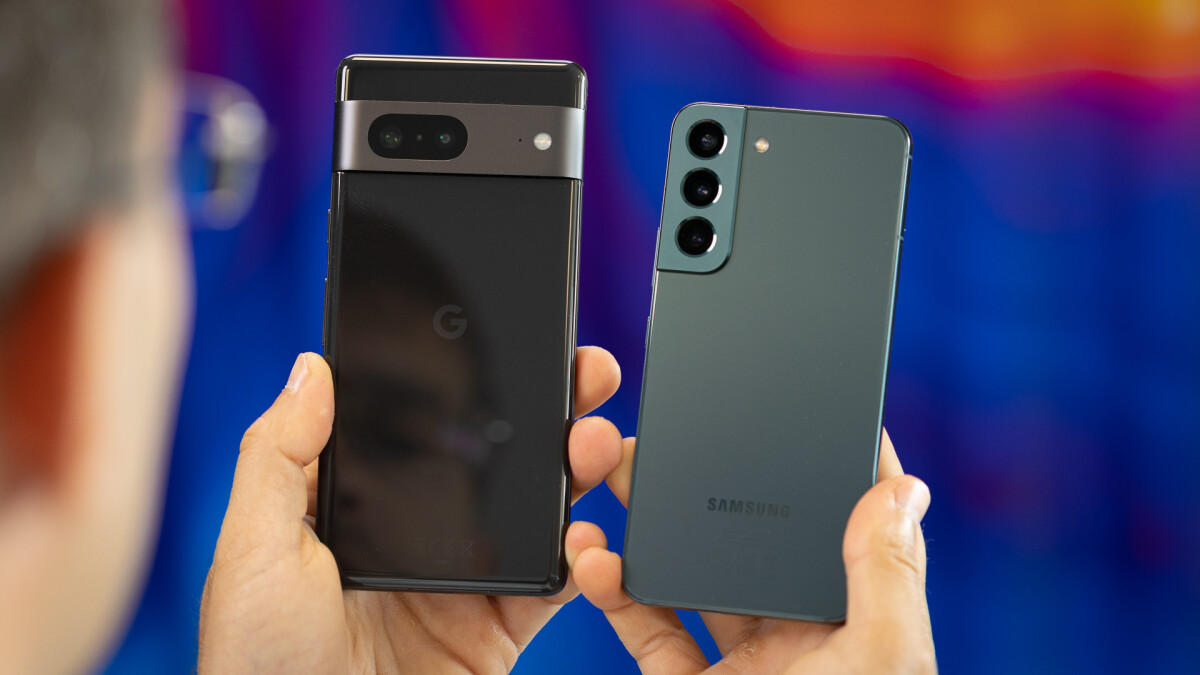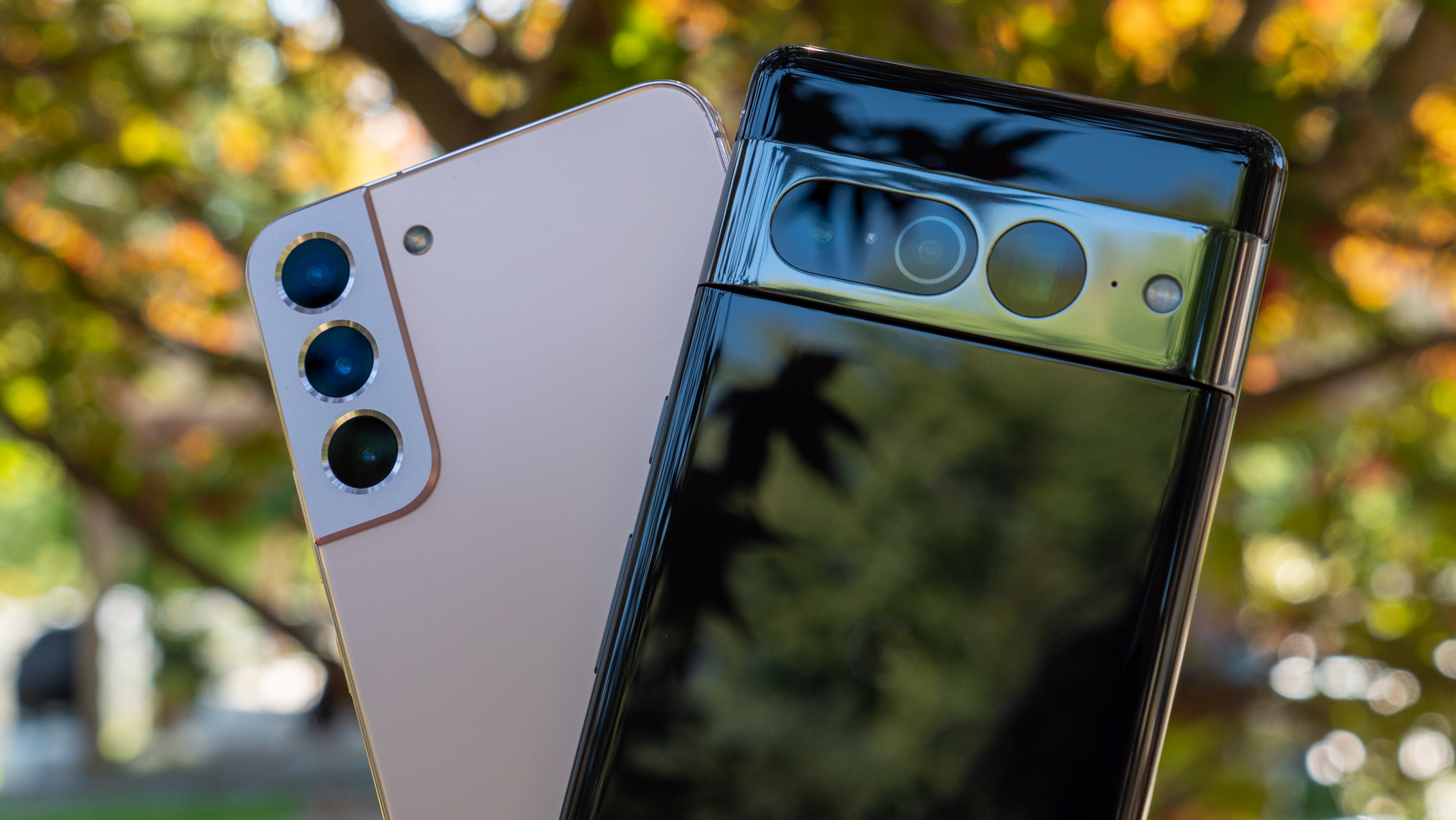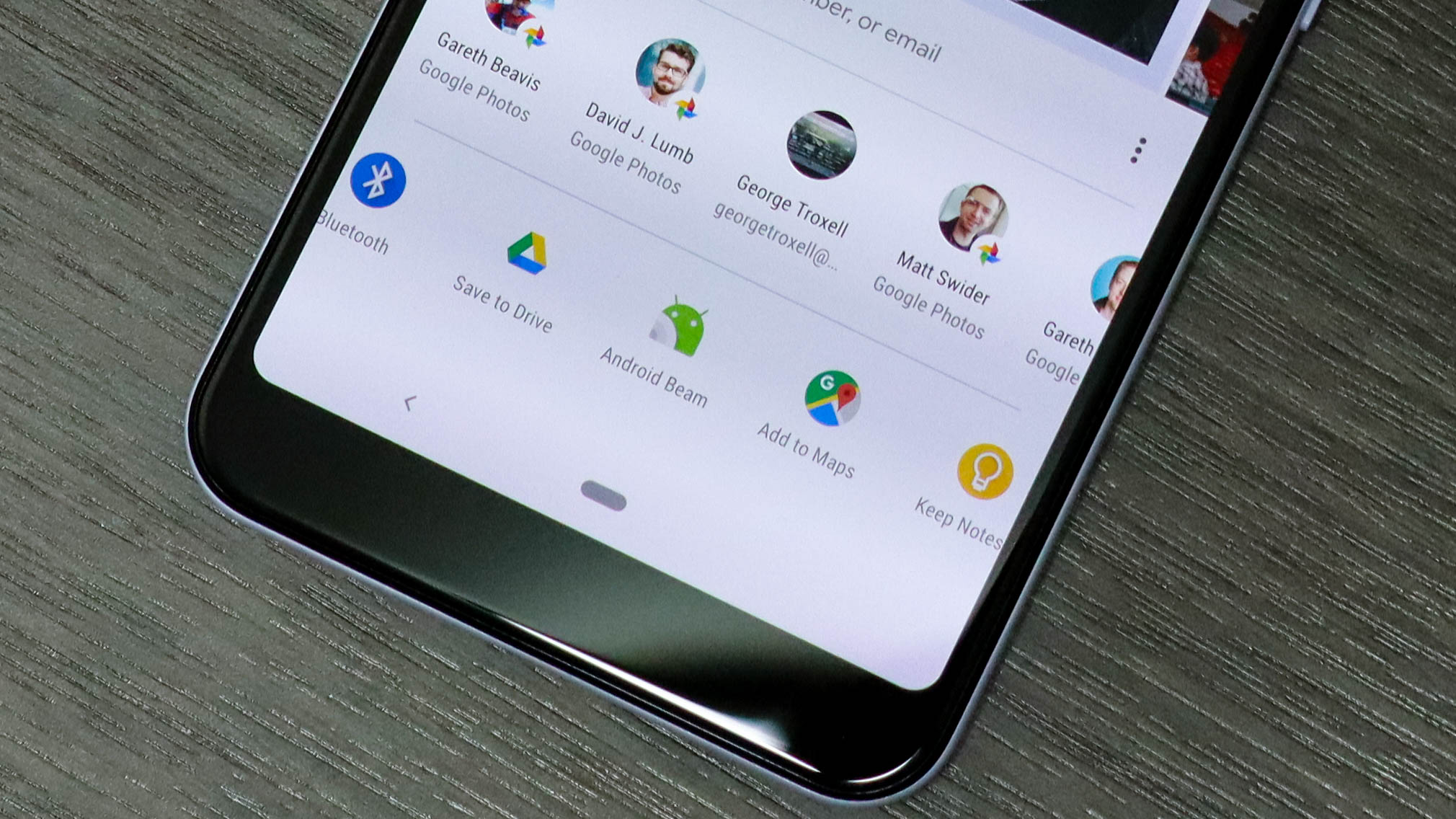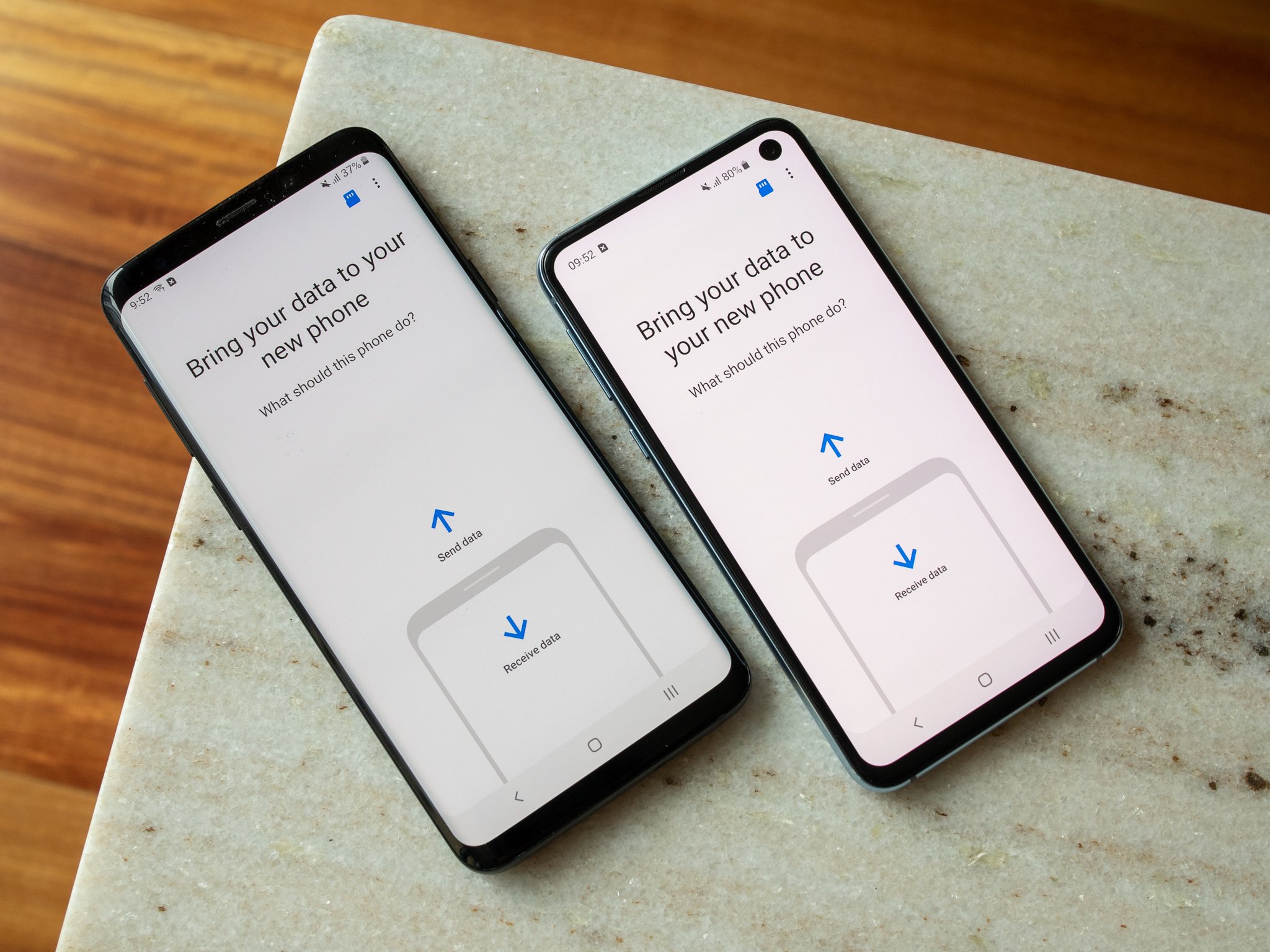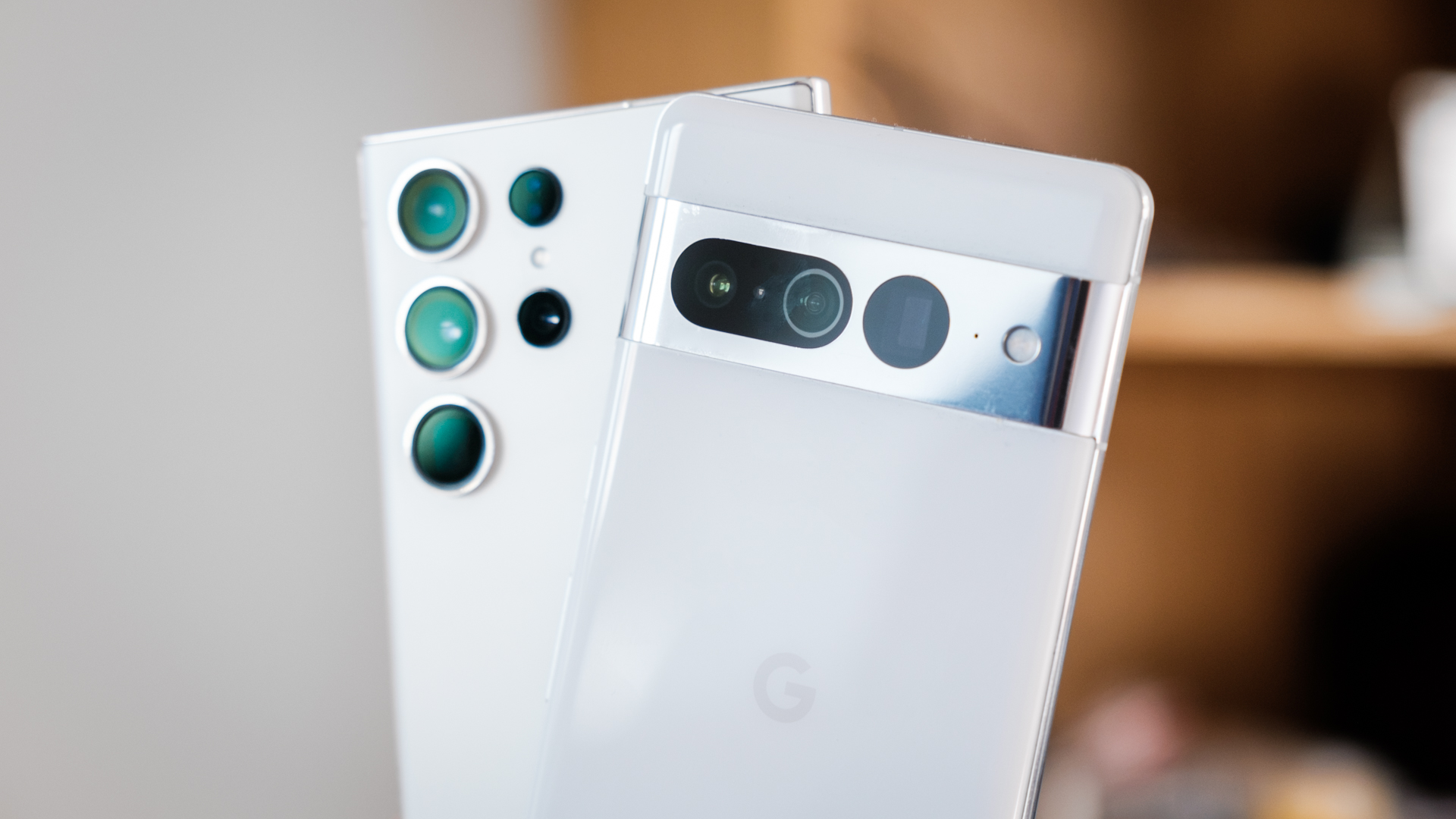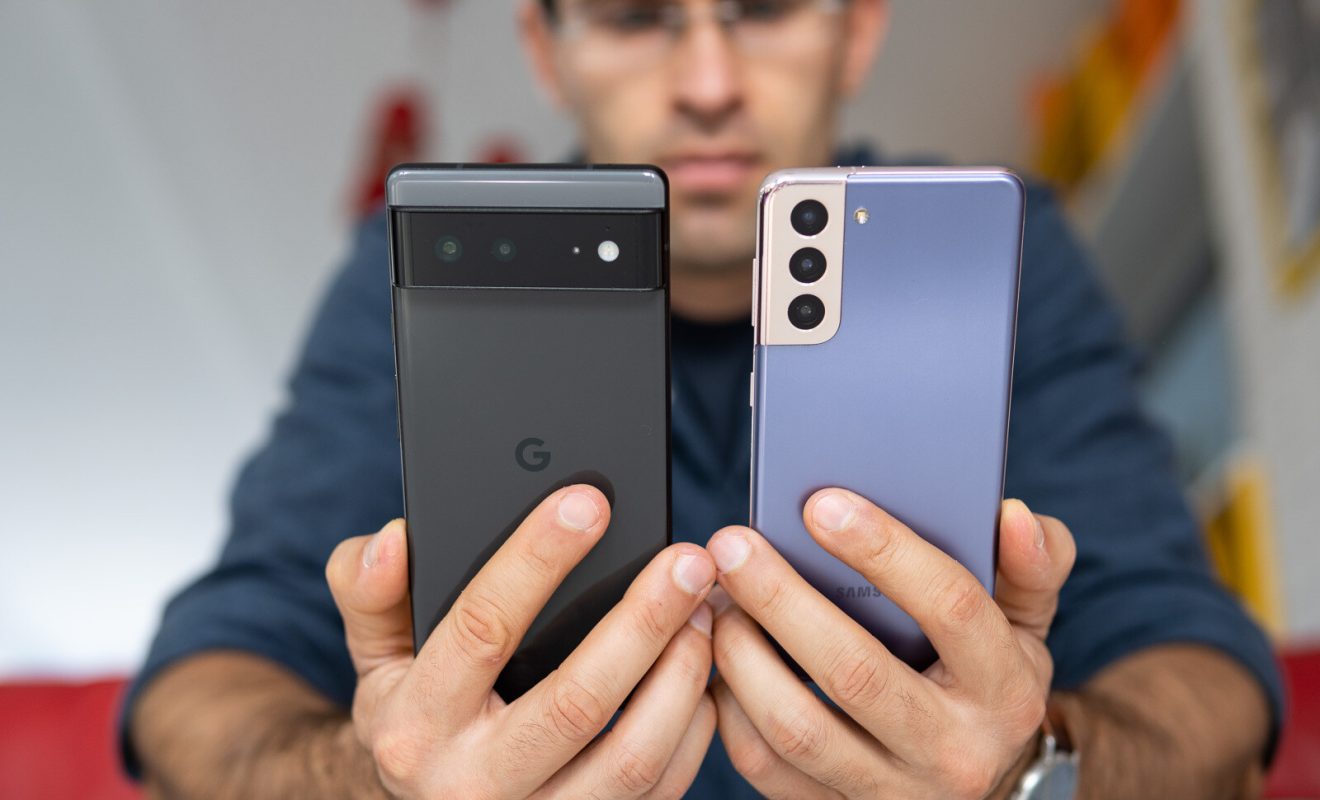
Switching to a new Android device can be an exciting endeavor, offering the promise of enhanced features and improved performance. However, the prospect of transferring data from your old device to the new one might seem daunting. In this guide, we'll explore various ways how totransfer data from Android to Android, ensuring that you can enjoy your new gadget with all your essential files, contacts, and settings intact. Fear not, as there are several user-friendly methods available to make this transition seamless.
What To Do Before You Transfer Data
Before embarking on the journey of transferring data from one Android device to another, follow these essential steps:
Charge Both Phones
Ensure that both your old and new devices are adequately charged to prevent any interruptions during the data transfer process.
Connect To Wi-Fi
Verify that both phones can connect to a Wi-Fi network. A stable internet connection is crucial for efficient and swift data transfer.
On Your Old Device
- Sign Out of RCS on Google Messages -Prioritize a smooth transition by signing out of Rich Communication Services (RCS) on Google Messages. This ensures a seamless messaging experience on the new device.
- Google Contacts Setup -If you don't utilize Google Contacts, navigate to Settings > Google > Settings for Google Apps> Google Contacts sync. Enable "Also sync device contacts" and select "Automatically back up & sync device contacts" to guarantee a comprehensive transfer of your contact information.
- Google Drive Backup -Perform a Google Drive backup unless you have already enabled Google One automatic backup. This step acts as a failsafe, ensuring that all your data is safely stored in the cloud in case of any unforeseen issues during the data transfer process.
How To Transfer Data From Old Android To New Android
Transferring data from your old Android device to a new one is a crucial step in ensuring a smooth transition and continuity of your digital life. Here's a step-by-step guide on how to transfer data from an old Android to a new one.
Google Account Sync
Begin by backing up data on your old device. Ensure that your old Android device is connected to the internet. Navigate to Settings > Accounts > Google and select the Google account you want to use for the backup. Enable synchronization for Contacts, Calendar, App Data, and other relevant items. Tap "Sync Now" to initiate the backup.
Next, set up your new device. During the initial setup of your new Android device, log in with the same Google account used for the backup. Enable synchronization for the same items as on the old device. The data will automatically be restored to your new device.
Android Backup Service
Start by backing up data on your old device. Go to Settings > System > Backup. Enable "Back up to Google Drive" and select the Google account for backup. Tap "Back up now" to start the backup process.
Now, on your new device, sign in with the same Google account used for the backup. During the setup process, choose to restore from a Google Drive backup. Select the backup you want to restore, and your data will be transferred.
Samsung Smart Switch (Samsung Devices Only)
If you're using Samsung devices, begin by installing Samsung Smart Switch from the Google Play Store on both devices. Open the Smart Switch on both devices and connect them using a USB cable or via Wi-Fi. Choose the data you want to transfer, such as contacts, messages, photos, and apps. Click "Transfer" on the old device, and the data will be transferred to the new device.
Bluetooth File Transfer
To transfer data via Bluetooth, start by enabling Bluetooth on both devices. Pair the devices by going to Settings > Bluetooth and selecting the other device. Use the file manager on your old device to select and send files via Bluetooth. On the new device, accept the incoming Bluetooth transfer.
Shareit Or Similar Apps
For file-sharing apps like Shareit, begin by installing the app on both devices. Open the app on both devices and choose the files you want to transfer. Click "Send" on the old device and "Receive" on the new one. Wait for the transfer to complete, and your files will be on the new device.
How To Backup Data On Android
Before diving into the excitement of setting up your new Android phone, it's crucial to initiate a backup of your old device. While you can transfer data without a backup, creating one ensures a safety net for your valuable information, especially when your old device is unavailable for the transfer process. Additionally, regular backups are a smart practice, offering peace of mind against unforeseen data loss scenarios.
- Access the Settings Page -Open the settings page on your Android phone to kickstart the backup process. Navigate through the options until you find the section labeled "System."
- Explore the Backup Option -Within the System menu, locate the "Backup" option. This is the gateway to creating a comprehensive backup of the data residing on your current device.
- Turn On Backup -If it's your first time creating a backup, select the "Turn on" button. This step allows you to review the types of data you can back up and provides insights into the available storage in your Google One account for this purpose.
- Review Backup Options - Take a moment to explore what can be included in the backup. Customize the backup settings based on your preferences, ensuring that all critical data is safeguarded for the transition to your new phone.
- Initiate Backup -Hit the "Back up now" button to initiate a fresh backup if you haven't created one in the past. Enter your PIN (or password) if you have a screen lock set on your device. Your phone will commence the backup process, capturing a snapshot of your data for a seamless transfer to your new phone.
- Wait for Backup Completion - Your phone may take a few minutes to complete the backup process. During this time, the Backup screen may appear grayed out, indicating that the system is actively securing your data. Exercise patience as the device meticulously captures all the essential information.
How To Backup Photos On Android
Ensuring the safety of your cherished photos and videos is paramount when transitioning to a new phone. Here's a step-by-step guide on how to seamlessly create a backup:
- Access Google Backup Page -Begin by safeguarding your visual memories. Navigate to the Google Backup page and select the dedicated section for "Photos & Videos."
- Toggle Backup & Sync -Within the Photos & Videos section, locate the "Backup & sync" option. Toggle the switch to enable this feature, unveiling a list of Google accounts associated with your device. This step allows you to choose the ideal account for your backup, displaying the available storage in each account for added convenience.
- Select Google Account -From the list of Google accounts, select the one that aligns with your preferences and storage needs. Having a clear view of the available space in each account ensures a well-informed decision.
- Upload Size Configuration -Once you've chosen the Google account, delve into the details by selecting the "Upload size" option. Tailor the quality settings for your uploads based on your preferences. This step empowers you to strike the perfect balance between preserving image and video quality and optimizing storage space.
- Initiate Backup -With your preferences configured, initiate the backup process. Your images and videos from the old phone will seamlessly sync with your Google Photos account, preserving them for access on your new device.
How To Transfer Photos From Android To Android Using Bluetooth
Transferring photos from one Android device to another using Bluetooth is a straightforward process. Here's a step-by-step guide to help you transfer your photos seamlessly:
Enable Bluetooth On Both Devices
- Open the Settings app on each Android device.
- Navigate to the "Connections" or "Bluetooth" section.
- Toggle Bluetooth on for both devices.
Pair The Devices
- On one of the devices, go to Bluetooth settings and make the device discoverable.
- On the other device, scan for available Bluetooth devices.
- Select the name of the other device from the list to initiate the pairing process.
- Accept the pairing request on both devices.
Share Photos Via Bluetooth
- Open the Gallery or Photos app on the device that has the photos you want to transfer.
- Select the photos you want to share. This is usually done by long-pressing on a photo or selecting multiple photos.
- Look for the "Share" or "Send" option. It might be represented by a share icon (usually three dots connected by lines).
- In the sharing options, choose Bluetooth.
Select The Paired Device
- After selecting Bluetooth, you will see a list of paired devices.
- Choose the name of the paired device that you want to send the photos to.
Accept The Transfer On The Receiving Device
- On the receiving device, you will be prompted to accept the incoming Bluetooth transfer.
- Confirm the transfer on the receiving device.
Wait For The Transfer To Complete
- The sending device will start transferring the selected photos to the receiving device via Bluetooth.
- Wait for the transfer to complete. The time it takes depends on the file size and the Bluetooth speed.
Verify The Received Photos
- Once the transfer is complete, open the Gallery or Photos app on the receiving device.
- Check to make sure that the transferred photos are now available on the receiving device.
Tips On Transferring Photos On Android
- Ensure that Bluetooth is enabled on both devices and that they are within a reasonable range for Bluetooth connectivity.
- Larger files may take longer to transfer, so be patient during the process.
- If the transfer is not successful, check that both devices have sufficient storage space and that Bluetooth is functioning properly.
How To Transfer Photos To New Android Using Google Photos
The Google Photos app serves as an invaluable tool for organizing, backing up, and seamlessly transferring photos from one Android phone to another. Whether pre-installed or obtained from the Google Play Store, this app provides a user-friendly solution for safeguarding and sharing visual memories.
To initiate the process, ensure that Google Photos is downloaded and installed on both the sender and receiver devices. Upon opening the app on the sender (or source) phone, access the menu options by tapping the profile icon at the top right. Here, enable the backup feature if it's not already activated.
Upon turning on backup, you'll be prompted to configure the settings. Choose between "Storage Saver," which slightly reduces quality to save space, or "Original Quality," preserving photos in their unaltered state. Additionally, you can decide whether to use cellular data in the absence of Wi-Fi.
Confirm your chosen settings by tapping "Confirm." The sender device will then commence the upload of your photos to Google Photos whenever there's an available internet connection.
On the receiver's (target) phone, open the Google Photos app and sign in with the same Google account used on the sender's device. Opt for "Original Quality" to maintain optimal photo preservation and enable "Backup & sync."
Verify the successful upload by checking for a checkmark on the new phone, indicating that the pictures and videos have been uploaded. Subsequently, the photos will automatically begin downloading onto your new Android phone, ensuring a seamless transfer of your cherished memories.
To enhance the efficiency of this process, ensure a stable internet connection, and be mindful of your chosen backup quality to balance storage considerations. Additionally, confirm that both devices are signed in with the same Google account for smooth synchronization. Regularly checking for updates to the Google Photos app ensures access to the latest features and improvements, further enhancing the overall user experience.
How To Transfer Photos From Android To Android Using Android Beam
Before embarking on the photo transfer journey via Android Beam, it's imperative to confirm that both Android phones are equipped with NFC hardware. Notably, devices running Android OS 4.0 or above typically support this feature, laying the foundation for a hassle-free transfer experience.
To ascertain the availability of NFC and Android Beam features on your devices, follow these steps:
- Launch the Settings app and navigate to "Wireless & networks."
- Tap on "More" to access additional settings.
- Confirm the presence of the NFC and Android Beam features, ensuring they are supported and enabled for seamless data transfer.
Now, let's delve into the straightforward steps to transfer photos from one Android phone to another using Android Beam:
- Enable NFC and Android Beam - Utilize the previously outlined steps to enable both NFC and Android Beam features on both devices.
- Navigate to Photo Gallery - Access the location in your phone's Gallery where the photos you wish to transfer are stored.
- Initiate Physical Connection - Bring both Android phones physically close, ensuring they are placed back-to-back. This proximity activates the NFC communication.
- Start the Beaming Process - Once the phones are nearby and the NFC connection is established, a prompt will appear on the sender's device, displaying "Touch to beam" or "Tap to beam."
- Tap to Transfer - Tap on the designated area on the sender's phone screen to initiate the beaming process. Your photos will commence transferring from one phone to another seamlessly.
- Confirmation Sound - Upon successful photo transfer, a confirmation sound will signal the completion of the process, assuring that your cherished memories have safely migrated to the recipient device.
- Error Notification - In the event of a transfer failure, a distinct negative tone will alert users, prompting them to troubleshoot and reattempt the process.
How To Transfer Videos From Old Android To New Android
In the vast landscape of Android features, Bluetooth continues to be a reliable ally for wirelessly sharing data between devices, including the seamless transfer of videos. While considered an older method, Bluetooth's efficiency has stood the test of time, offering an updated connectivity experience for quicker data sharing between Android devices.
Transferring Videos Via Bluetooth
Transferring videos via Bluetooth begins with enabling Bluetooth on both devices through the "Settings" menu. Once activated, the receiving device enters "Discover Mode" to allow the sender device to detect its presence. This proximity establishes a wireless connection between the devices, and the user can select and share videos from the sender device to the receiving device with a simple click on "Share" > "Bluetooth." A confirmation sound signifies a successful transfer, while a negative tone indicates transfer failure.
Manually Transfer Videos Via Computer
Another method for transferring videos involves connecting both Android devices to a computer using USB cables. By selecting "File Transfer" on the devices, users can access their storage through the computer's "My Computer" interface. In this setup, the "Video" folder on both devices becomes accessible, and users can either drag and drop videos or copy and paste them between devices.
Transfer Videos Via Google Backup
For users seeking a more automated process, Google Backup proves to be a convenient option. By logging into the Android device with a Google account and enabling "Backup data" and "Automatic restore" in the "Backup and Reset" settings, users ensure that Google seamlessly syncs data between devices. This method simplifies the transfer process, particularly for users who prefer effortless data synchronization.
Effortless One-Click Transfer With AnyDroid
In addition to these methods, AnyDroid offers a one-click solution for transferring videos between Android devices. After connecting both devices to the computer, users can run AnyDroid, choose the desired videos under "Device Manager," and initiate the transfer with a click on "To Device." This method allows for selective video transfers, providing a quick and efficient solution for users looking to transfer specific contentbetween their Android devices.
Whether users opt for the familiarity of Bluetooth, the manual control of computer-based transfers, the automated synchronization of Google Backup, or the efficiency of AnyDroid's one-click transfer, each method caters to different user preferences and scenarios, ensuring a versatile and user-friendly experience for transferring videos between Android devices.
What Should You Do With Your Android Phone After You Transfer The Data
As you revel in the excitement of your new Android device, it's crucial not to overlook the digital footprint left by your old phone. Despite the allure of the latest technology, your former companion still holds a trove of personal data until you take the necessary steps to sever the connection.
Once you've diligently transferred all your data to the new device, the next imperative move is to wipe your old phone clean through a comprehensive factory reset. This meticulous process is not merely a routine task; it's a safeguard against unauthorized access to your sensitive information. This precaution becomes especially paramount if you contemplate selling or parting ways with your previous device.
In the intricate realm of our smartphones lie intricacies of our lives - comprehensive records of our browsing habits, intricate location data, and even insights into our spending behaviors. In this digital age, where our devices often double as repositories for passwords, bank details, and other sensitive content, fortifying your privacy is not merely a suggestion; it's a necessity.
To fortify the security of your personal information from prying eyes and potential cyber threats, we recommend the installation of a Virtual Private Network (VPN) on your new Android device. A VPN acts as a shield, creating a secure tunnel for your data to traverse, thereby thwarting the efforts of snoops and cybercriminals attempting to exploit vulnerabilities.
By integrating this additional layer of protection, you ensure that your digital interactions remain private and shielded from potential threats in the vast landscape of the digital realm.
Android To Android Complete Transfer: Using Samsung Smart Switch
Upgrading to a new Android device is an exciting prospect, but the process of transferring your data can often be daunting. Fortunately, the Samsung Smart Switch simplifies this transition, offering a hassle-free solution for users migrating from one Android device to another, especially when making the switch to a Samsung phone.
- Understanding Samsung Smart Switch - Samsung Smart Switch is a versatile tool designed to facilitate the transfer of data from your old Android device to a new Samsung phone. It supports various data types, including contacts, messages, photos, videos, apps, and more.
- Compatibility Check - Before initiating the transfer process, ensure that both your old and new Android devices are compatible with Samsung Smart Switch. The app is available for download on Google Play Store for non-Samsung devices.
- Install Samsung Smart Switch - On your new Samsung device, Samsung Smart Switch is often pre-installed. If not, download and install it from the Galaxy Store. For the old device, download the app from Google Play Store if not using a Samsung device.
- Connection Options - Samsung Smart Switch provides multiple connection options for the transfer. You can use a USB cable, a wireless connection, or the Smart Switch app. Choose the method that suits your preference and device compatibility.
- USB Cable Connection - If opting for a USB cable, connect both devices using the appropriate cables. Follow the on-screen instructions to establish a connection. Ensure USB debugging is enabled on your old device if prompted.
- Wireless Connection - For a wireless transfer, ensure both devices are connected to the same Wi-Fi network. Open Samsung Smart Switch on both devices, select the wireless transfer option, and follow the prompts to establish a connection.
- Smart Switch App - Alternatively, the Smart Switch app allows a direct transfer between devices using the device-to-device connection feature. Launch the Smart Switch app on both devices, select 'Android Device,' and follow the prompts to establish a connection.
- Select Data for Transfer - Once the connection is established, Samsung Smart Switch will prompt you to select the data types you wish to transfer. Choose from contacts, messages, photos, videos, and more. The app provides a detailed breakdown of available data.
- Initiate the Transfer - After selecting the data, initiate the transfer process. Samsung Smart Switch will seamlessly move the chosen content from the old device to your new Samsung phone. The duration of the transfer may vary based on the volume of data.
- Verify Data on New Device - Once the transfer is complete, thoroughly verify the data on your new Samsung device. Check contacts, messages, photos, and apps to ensure the integrity of the transferred content.
What Is The Best Way To Transfer Data From Android To Android? FAQ
What Is The Best Method To Transfer Data Between Android Devices?
The best method depends on personal preferences and device compatibility. Popular options include Google's built-in services (Google Drive, Google Photos), Samsung Smart Switch for Samsung devices, third-party apps (SHAREit, Send Anywhere), and manual methods like using a USB cable or Bluetooth. Choose based on your convenience and the data types you wish to transfer.
Can I Transfer All Types Of Data Using These Methods?
Yes, the mentioned methods support the transfer of various data types, including contacts, messages, photos, videos, and apps. Ensure that the chosen method aligns with your specific data transfer requirements.
Is There A Built-in Solution For Data Transfer On Android Devices?
Yes, many Android devices come with built-in solutions for data transfer. Google's services, such as Google Drive and Google Photos, are pre-installed on most devices and facilitate seamless data transfer. Additionally, Samsung devices often include Samsung Smart Switch for a straightforward transfer process.
Are Third-party Apps Safe For Data Transfer?
Many third-party apps, such as SHAREit and Send Anywhere, are safe and widely used for data transfer. However, it's essential to download them from reputable sources like the Google Play Store. Read user reviews and check app permissions to ensure security.
What Should I Do Before And After Data Transfer To Ensure A Smooth Process?
Before transferring data, charge both devices, ensure a stable Wi-Fi connection, and back up essential data. After transfer, verify the completeness of the data on the new device, and consider performing a factory reset on the old device to secure personal information.
Can I Transfer Apps From My Old Android To My New One? FAQ
Is It Possible To Transfer Apps Between Android Devices?
Yes, it is possible to transfer apps from your old Android device to a new one. Several methods and tools allow you to accomplish this seamlessly.
Can I Use Google Play Store For App Transfer?
Yes, Google Play Store simplifies the process of transferring apps. Navigate to "My apps & games" on your new device, where you can view and download previously installed apps associated with your Google account.
Are There Third-party Apps For Transferring Apps?
Yes, several third-party apps facilitate app transfer between Android devices. Apps like SHAREit, Send Anywhere, and Helium offer options to transfer not only the apps but also their associated data.
Can I Transfer Apps If My Old And New Devices Are From Different Manufacturers?
Yes, app transfer is possible between devices from different manufacturers. However, ensure compatibility and consider using universal transfer methods like Google Play Store or third-party apps that support cross-manufacturer transfers.
What About App Data? Can It Be Transferred Too?
Yes, certain tools and apps, like Helium and Titanium Backup, allow you to transfer not only the apps but also their associated data. This is particularly useful if you want to retain app settings, login information, and preferences.
Should I Completely Wipe My Old Android After Transferring My Data? FAQ
Why Should I Consider Wiping My Old Android Device After Data Transfer?
Wiping your old Android device after data transfer is essential to ensure the protection of your personal information. It prevents unauthorized access to sensitive data and maintains your privacy.
When Is The Best Time To Perform A Factory Reset On My Old Device?
The best time to perform a factory reset is after you have successfully transferred all your data to the new device. This ensures that no personal information is left on the old device.
What Does A Factory Reset Entail, And What Does It Delete?
A factory reset erases all user data, settings, and installed apps on the device, restoring it to its original state. It deletes everything stored on the internal storage, including accounts, passwords, and personal files.
Can I Sell Or Give Away My Old Android Device Without Wiping It?
It is not recommended to sell or give away your old Android device without wiping it. Doing so poses a security risk, as the new owner could potentially access your personal information. Always perform a factory reset before transferring ownership.
How Do I Perform A Factory Reset On My Old Android Device?
To perform a factory reset, go to the device's settings, find the "System" or "General Management" section, and look for the "Reset" or "Backup & Reset" option. Choose the "Factory data reset" or similar option, and follow the on-screen instructions.
People Also Ask
Is It Possible To Transfer WhatsApp Data From One Android Phone To Another?
Yes, you can transfer WhatsApp data from one Android phone to another. Utilize the "Google Drive Backup" feature in WhatsApp settings on your old device, and then restore the backup on the new device using the same Google account.
Can I Transfer Apps And Their Data Between Android Devices Without Root Access?
Yes, you can transfer apps and their data between Android devices without root access. Utilize apps like Helium or Titanium Backup, which allow you to create backups of apps and their associated data, and then restore them on the new device.
How Do I Transfer Contacts From Android To Android Without Google Account?
You can transfer contacts from one Android device to another without a Google account by using the "Import/Export" feature. Go to Contacts, choose "Import/Export," select the source device, export contacts to a VCF file, and then import them on the new device.
Can I Transfer Data From An Old Android Phone To A New Iphone?
Yes, it's possible to transfer data from an old Android phone to a new iPhone. Use the "Move to iOS" app on the Android device to wirelessly transfer contacts, messages, photos, and more to the new iPhone during the setup process.
Final Thoughts
In the ever-evolving landscape of technology, upgrading to a new Android device is a common occurrence. The good news is that with the right tools and methods, transferring your data doesn't have to be a complicated process.
Whether you choose to leverage Google's seamless synchronization, employ specialized apps like Samsung Smart Switch, or opt for Bluetooth and file-sharing applications, the key is to select the method that aligns with your preferences and needs. Embrace the possibilities of your new Android device, knowing that your cherished data has safely made the journey to accompany you on this exciting technological adventure.
